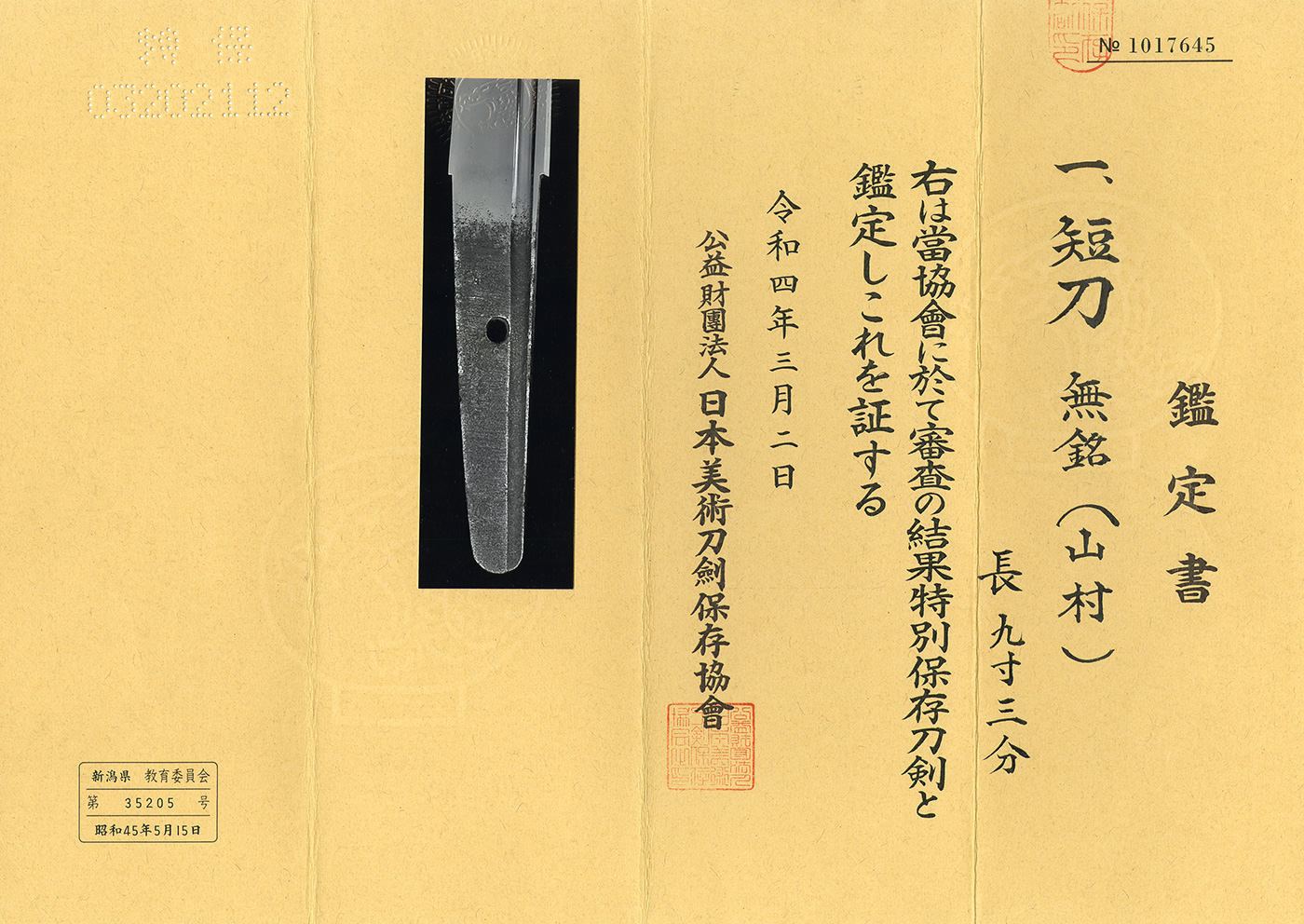Bid History
Auction has expired
Highest bidder was : maikhalmer
|
maikhalmer
2025/10/02 (Thu) 13:08 |
¥450,000 |
|
Auction started
2025/10/01 (Wed) 10:38 |
|
※ = Auto
Ordeirng nuber:AS25401
Tanto in Shirasaya with Koshirae (NBTHK Tokubetsu Hozon Token)
Signature: Mumei (Yamamura)
無銘(山村)
We divide 4 sections for each sword as Saijyo Saku, Jyojyo Saku, Jyo Saku and Regular Saku.
This work is ranked as Jyo Saku for the smith Mumei (Yamamura).
Habaki: Single-layered, gold-covered.
Blade Length: 28.2 cm (11.10 in)
Curvature: 0 cm (0.00 in)
Mekugi Hole: 1
Width at Base (Motohaba): 2.66 cm (1.05 in)
Thickness of rim (Kasane): 0.60 cm (0.24 in)
Sword Weight: 189 g
Era: Early Muromachi period, around Oei era (1394–1428)
Shape: Slightly wide blade with a bohi groove carved on both sides.
It has a mitsumune (triple ridge) shape.
The nakago is carved all the way to the kurijiri.
Jigane: Ko-itame hada, well-forged with clearly visible grain and a discernible utsuri.
Hamon: Nioi-deki in suguha, with a rounded boshi.
Features: This tanto was authenticated as Yamamura by the NBTHK.
Yamamura is a smith active around the early Muromachi period (Oei era).
Koshirae:
Tsuba: Iron tanto tsuba with raised rim, decorated with gold-colored design.
Fuchikashira: Made of shakudo with carvings of waves and dragon-turtle, with gold-colored detailing.
Saya (Scabbard): Dark brown lacquered with finely cut rice plant motifs inlaid.
Menuki: High-relief carving of human figures with gold-colored decoration.
Kozuka: Shakudo nanako ground with high-relief carving of a cormorant fishing scene, detailed in gold.
Includes kogatana (small utility knife).
Aoi Art’s Comment: This work is attributed to Yamamura (of the Echigo Yamamura Nobukuni school).
Although close to Nobukuni style, it shows characteristics of hada-mono.
It is not a flashy work, but with only one mekugi-ana, it appears to have been carefully preserved.
NBTHK Tokubetsu Hozon Token
Aoi Art estimation paper
Whole Oshigata








Winning Bid: ¥450,000
Auction has expired
Highest bidder was : maikhalmer
|
maikhalmer
2025/10/02 (Thu) 13:08 |
¥450,000 |
|
Auction started
2025/10/01 (Wed) 10:38 |
|
※ = Auto